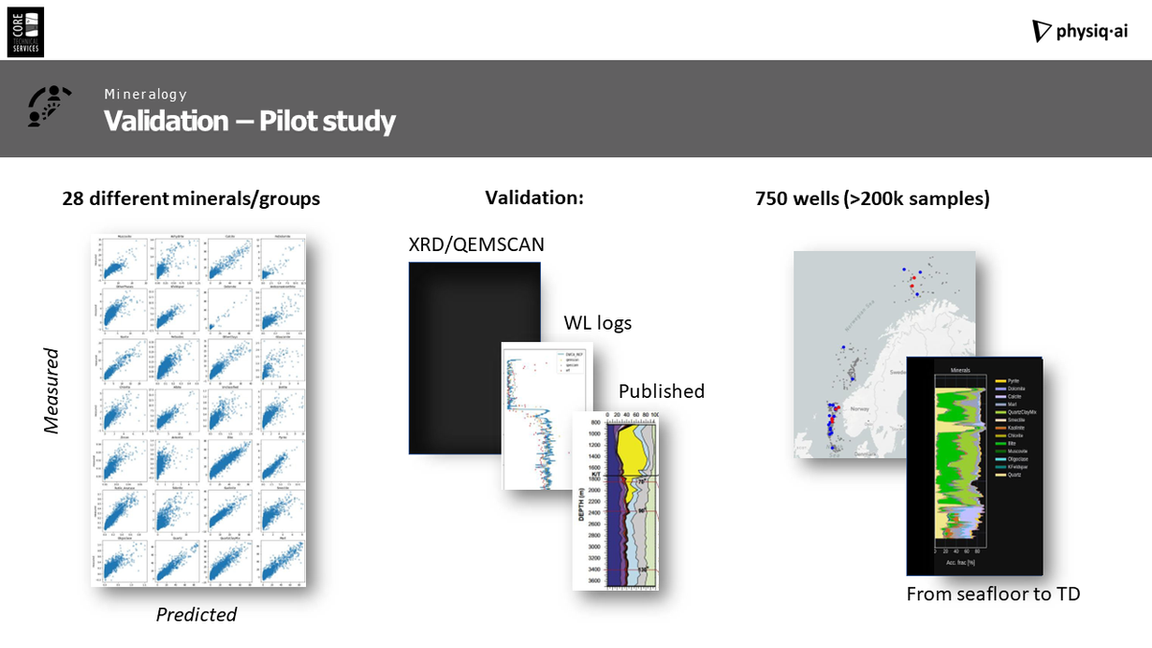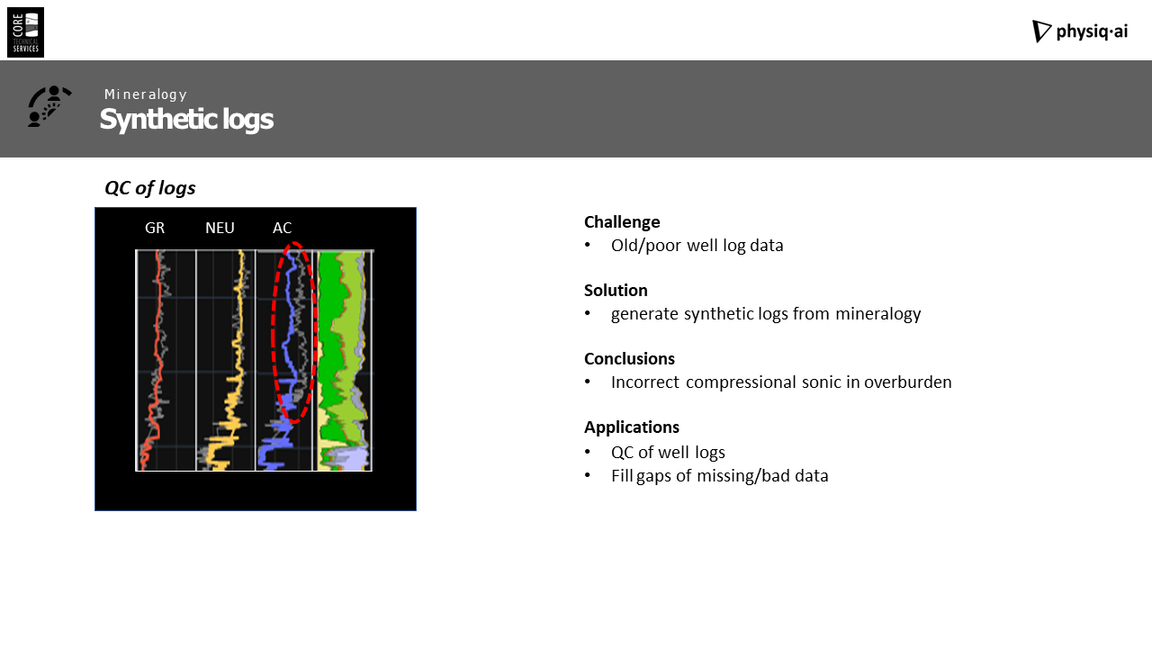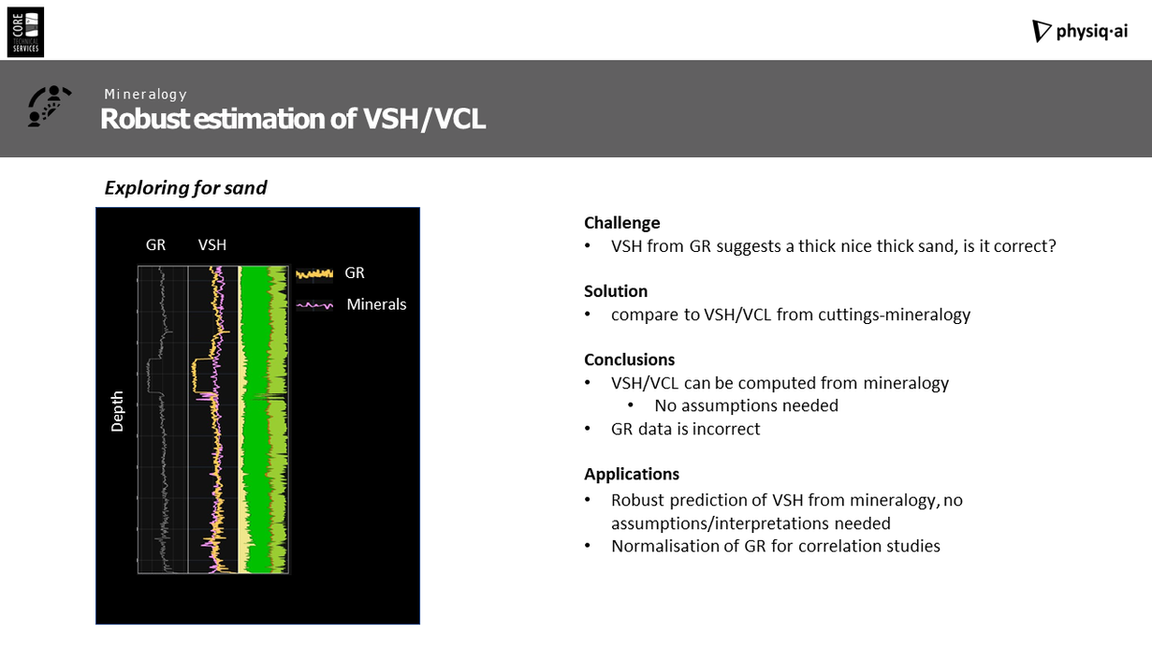Derived Minerology and Geochemistry
Elemental data from XRF has in itself a significant intrinsic value that is currently not being realised. Since no additional data need be acquired, there is the opportunity to add value to the clients deliverables

Core and cuttings derived mineralogy logs for improved subsurface characterization
Currently a significant amount of core is annually subject to scanning and data acquisition
Some of the data acquired has standalone application (such as rock strength, UCS) whilst other data is used as part of the CoreDNA clustering analysis to define facies types to aid core sampling for core analysis studies of various types.
The value of CoreDNA is that it ensures that sampling for core studies is performed in an intelligent and targeted way. Historically this was not possible, often leading to unrepresentative data arising for the core studies which can have a profound negative impact of the projects that depend on this critical data.
XRF data is acquired providing elemental analysis of the rock. Currently this data is used purely for the purposes of CoreDNA analysis – correlations between elemental ratios and other parameters for facies identification.
Elemental data from XRF has in itself a significant intrinsic value that is currently not being realised. Since no additional data need be acquired, there is the opportunity to add value to the clients deliverables.
XRF elemental data can be converted to a mineral assemblage. Ideally this would be calibrated by a limited number of XRD analyses (sampling sites based upon XRF and CoreDNA). Having XRD is not strictly necessary, but is highly likely to improve the outcome.
However, now a further step has been taken and can be offered in conjunction with Bergen based Physiq.ai. As implied, artificial intelligence (AI) is used to generate synthetic well log responses (gamma, density etc). based upon the predicted mineral assemblage.
If the client provides the actual well logs, an iterative refinement process is run with AI by adjusting the predicted mineral assemblage to produce a best match between the actual and synthetic well logs. Thus, the predicted mineral assemblage is first calibrated from XRD (if available) and then optimised against the actual well logs, both using AI. All from existing data.
The benefit over “snap-shot” mineralogy from XRD is that in effect, a continuous log of mineral assemblages for the entire core is generated. This is much more useful than occasional/sporadic data points. This would be of significant benefit to sub-surface professionals (geologists, petrophysicists, well engineers for example) in understanding the reservoir and planning it’s development.
Get a Quote
If you have any additional questions don't hesitate to get in touch and one of our specialists will be happy to help















